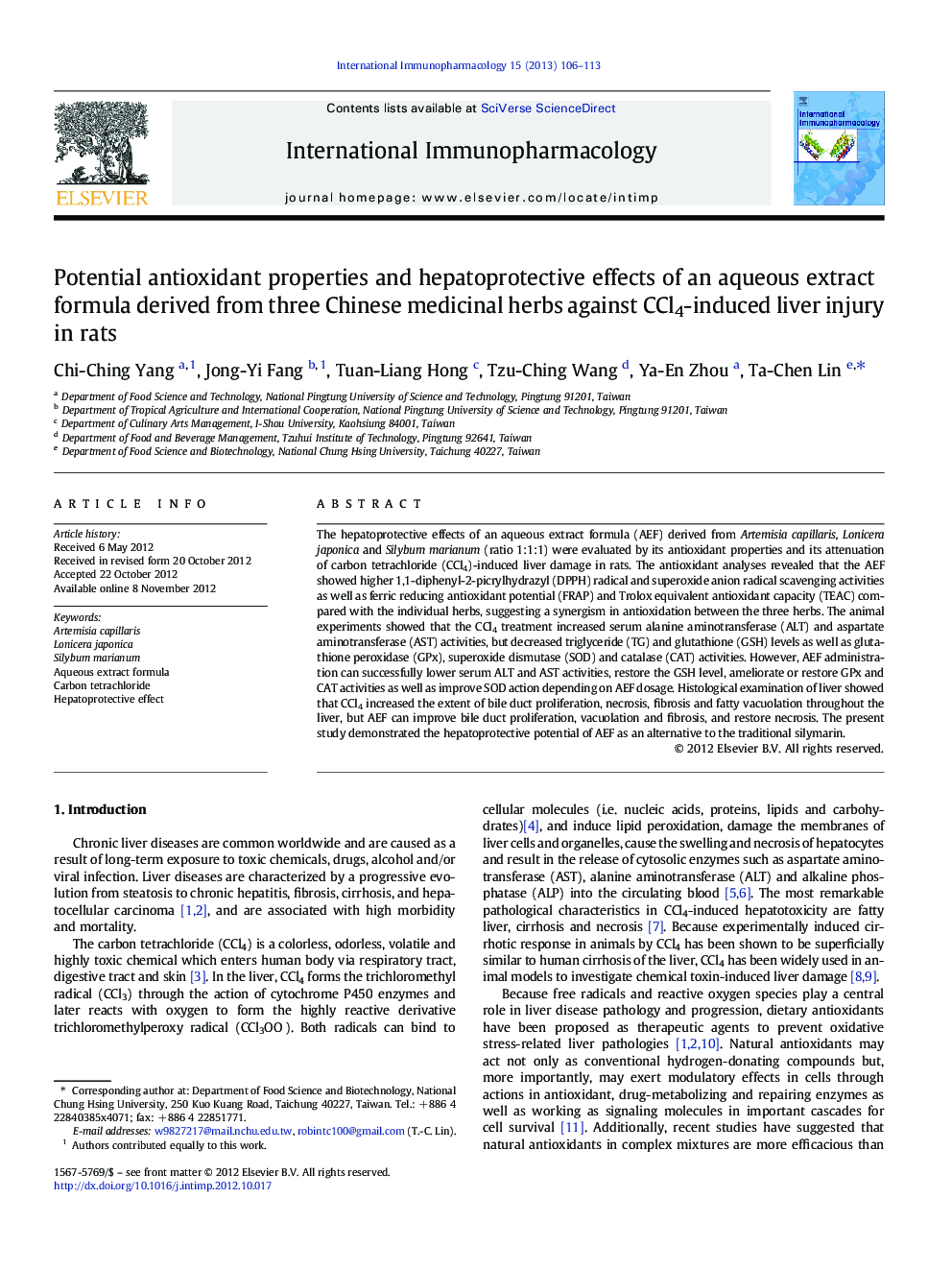| Article ID | Journal | Published Year | Pages | File Type |
|---|---|---|---|---|
| 2540933 | International Immunopharmacology | 2013 | 8 Pages |
The hepatoprotective effects of an aqueous extract formula (AEF) derived from Artemisia capillaris, Lonicera japonica and Silybum marianum (ratio 1:1:1) were evaluated by its antioxidant properties and its attenuation of carbon tetrachloride (CCl4)-induced liver damage in rats. The antioxidant analyses revealed that the AEF showed higher 1,1-diphenyl-2-picrylhydrazyl (DPPH) radical and superoxide anion radical scavenging activities as well as ferric reducing antioxidant potential (FRAP) and Trolox equivalent antioxidant capacity (TEAC) compared with the individual herbs, suggesting a synergism in antioxidation between the three herbs. The animal experiments showed that the CCl4 treatment increased serum alanine aminotransferase (ALT) and aspartate aminotransferase (AST) activities, but decreased triglyceride (TG) and glutathione (GSH) levels as well as glutathione peroxidase (GPx), superoxide dismutase (SOD) and catalase (CAT) activities. However, AEF administration can successfully lower serum ALT and AST activities, restore the GSH level, ameliorate or restore GPx and CAT activities as well as improve SOD action depending on AEF dosage. Histological examination of liver showed that CCl4 increased the extent of bile duct proliferation, necrosis, fibrosis and fatty vacuolation throughout the liver, but AEF can improve bile duct proliferation, vacuolation and fibrosis, and restore necrosis. The present study demonstrated the hepatoprotective potential of AEF as an alternative to the traditional silymarin.
► AEF consisted of Artemisia capillaris, Lonicera japonica and Silybum marianum. ► Study of antioxidant properties of AEF. ► Study of protective effects of AEF against CCl4-induced liver damage in rats. ► Demonstration of hepatoprotective potential of AEF as an alternative to silymarin
